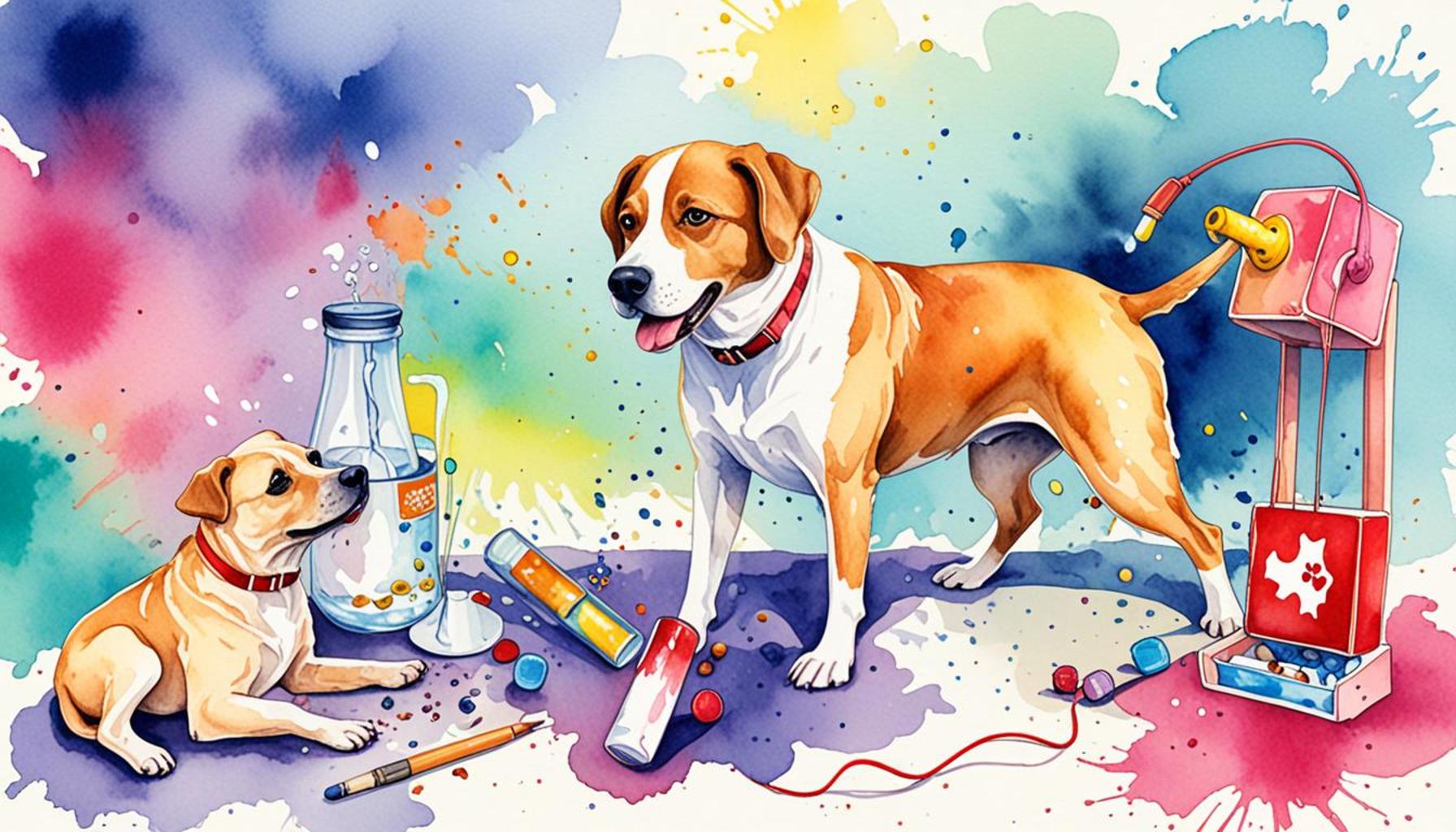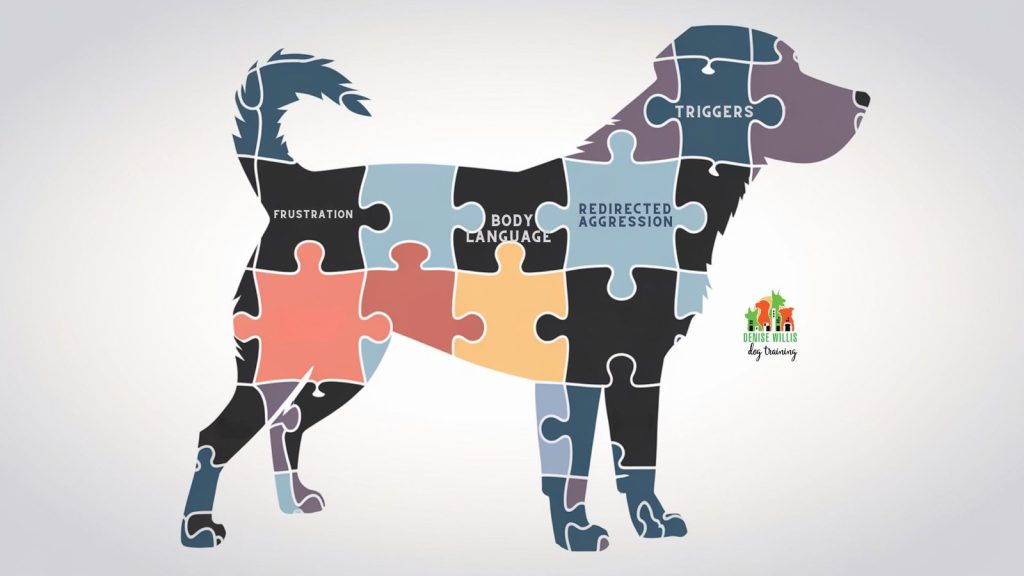Reactivity in Dogs: Understanding Behavior in Stressful Situations

The behavior of dogs in stressful situations can often be puzzling and alarming for their owners. Reactivity is a common response that manifests in various ways, shaping how dogs interact with their environment. Understanding this behavior is essential for fostering a healthy relationship between dogs and their families.
What Triggers Reactivity?
Reactivity in dogs can stem from multiple factors, including:
- Fear or anxiety in unfamiliar settings: This can occur during walks in crowded areas, such as busy markets in Nigeria. If a dog’s first experience in such environments is overwhelming, the noise and throngs of people may trigger defensive behaviors.
- Previous negative experiences that left a lasting impression: A dog that was once attacked or frightened by another animal may develop a reactive response to similar situations in the future, demonstrating fear-based behaviors even when there’s no apparent threat.
- Environmental stimuli such as loud noises, other animals, or crowds: For instance, fireworks during festive celebrations can be particularly distressing for some dogs, leading to a range of reactions from anxiety to destructive behaviors.
Recognizing Reactive Behavior
Identifying reactive behaviors is crucial for effective management. Common signs include:
- Barking excessively at strangers or animals: This is often the first indication of distress, signaling to the owner that the dog feels threatened or uncomfortable.
- Lunging toward other dogs or people: This behavior is usually an attempt to escape or confront the perceived threat and can lead to dangerous situations if not controlled.
- Aggressive body language, such as growling or snapping: These signs indicate a heightened state of stress and a potential risk of aggression if the dog feels cornered or unable to escape.
Impact on Daily Life
A reactive dog can significantly affect social interactions and daily activities for their owners. Unpredictable reactions can make outings complicated, deterring owners from taking their pets to parks or social gatherings. This can lead to a feeling of isolation for both the owner and their dog, as many dog-friendly events become stressful rather than enjoyable.
In Nigeria, where party celebrations or bustling markets are common, understanding and addressing reactivity becomes even more critical. For example, during a traditional wedding celebration with lively music and many guests, a dog might feel overwhelmed and react negatively. Ensuring proper socialization and training for dogs can lead to safer interactions, not just for the dog and owner, but for the surrounding community as well.

By taking proactive measures, such as desensitization training and positive reinforcement techniques, dog owners can help their pets navigate stressful environments more comfortably. Seeking the help of a professional trainer experienced in behavioral issues can also facilitate effective coping strategies, fostering a more harmonious relationship between dogs and their families.
RECOMMENDED: Check out this similar article
Understanding the Roots of Reactivity in Dogs
To effectively address reactivity in dogs, it is crucial to understand its underlying roots. This behavioral response is often a dog’s way of communicating distress or discomfort in situations that they perceive as threatening. Recognizing these triggers is the first step for owners striving to improve their dog’s well-being and social interactions.
Common Triggers of Reactivity
Several factors contribute to a dog’s reactive behavior. Understanding these triggers can help in formulating effective management strategies. Some common triggers include:
- Sudden changes in environment: A dog accustomed to a predictable routine may react negatively when introduced to abrupt changes, such as moving to a new neighborhood in Nigeria. The unfamiliar sounds, sights, and smells can lead to heightened anxiety and stress.
- Specific stimuli: Certain sights, such as bicycles, motorbikes, or even other dogs, can provoke a reactive response. For instance, in urban areas like Lagos, where the hustle and bustle of daily life is prevalent, fast-moving vehicles and crowds can overwhelm a dog, pushing them to demonstrate anxiety-driven behaviors.
- Owner’s emotions: Dogs are known to be sensitive to their owner’s feelings. If an owner is anxious or stressed while walking their dog, this can exacerbate the dog’s own fears, leading to a cycle of reactivity.
The Role of Socialization
The impact of socialization on a dog’s behavior cannot be overstated. Proper socialization is crucial in helping dogs learn how to cope with different environments and experiences. An inadequately socialized dog may become fearful or reactive when confronted with situations outside their norm. This may manifest during community gatherings, such as local festivals where music, crowds, and unfamiliar faces abound.
Additionally, socialization isn’t solely limited to interactions with other dogs. Exposure to a variety of people, environments, and stimuli can significantly enhance a dog’s coping mechanisms. For instance, gradually introducing a dog to various sounds, sights, and smells can help reduce their reactivity over time, paving the way for more enjoyable outings.
Consequences of Reactive Behavior
The consequences of unaddressed reactivity can be significant, impacting not only the dog’s mental health but also the overall quality of life for both the dog and the owner. Reactive behavior can lead to avoidance of certain places, such as parks, where other dogs and people gather, which can hinder a dog’s social development and limit physical activity.
Furthermore, as dogs react to their environment, it can lead to embarrassing or even dangerous situations. For example, a dog lunging at a passerby could result in injury to either party, causing strain in the human-dog relationship and eroding trust. Therefore, recognizing and addressing these behaviors is essential for promoting positive interactions within communities.
By proactively addressing the roots of reactivity in dogs, owners can create a more supportive environment, ensuring their pets feel safe and secure. Taking steps to improve socialization and understanding triggers can significantly enhance a dog’s ability to navigate the world with confidence.
Reactivity in dogs, particularly in stressful situations, is a crucial area for pet owners to understand. It’s essential to first recognize that reactivity often stems from fear, anxiety, or frustration rather than aggression alone. When dogs encounter something that triggers their stress response—be it loud noises, unfamiliar people, or other animals—they may display various behaviors such as barking, growling, or even lunging. Understanding this reactivity can pave the way for effective interventions and training strategies.One significant aspect of this behavior is recognizing the body language of dogs. Subtle cues such as a tucked tail, pinned ears, or a lowered body position can indicate stress. Owners equipped with this knowledge can take proactive measures to manage their dog’s environment and avoid triggering situations. Identifying these signs early allows for timely intervention, which can greatly reduce stress for both the dog and owner.Additionally, the concept of socialization during a puppy’s formative months cannot be overstated. Exposing puppies to various environments, experiences, and other dogs in a positive manner can help them develop confidence and less reactive tendencies in the future. The ongoing training techniques like desensitization and counter-conditioning can further assist in addressing reactivity. These methods focus on gradually exposing the dog to their stressors in a controlled way, thereby helping them build coping strategies. Finally, it’s crucial to remember that each dog is unique in its responses. Factors such as breed, age, and previous experiences contribute to how a dog reacts in stressful situations. Pet owners are encouraged to consult with professional trainers or animal behaviorists who can tailor strategies specific to their dog’s needs, fostering a safer and more enjoyable environment for everyone involved. In addressing reactivity, owners not only improve their dog’s quality of life but also enhance their own experiences and relationships with their canine companions. Understanding and managing this behavior can lead to more peaceful walks and interactions, fostering a better bond between dogs and their humans.
| Category | Key Features |
|---|---|
| Understanding Reactivity | Identifying stress triggers through body language and behaviors. |
| Pathways to Solutions | Incorporating training methods, socialization, and professional support. |
This comprehensive approach ensures owners are equipped to improve both their dog’s mental and emotional well-being, ultimately fostering a happier and more harmonious relationship.
RECOMMENDED: Check out this similar article
Effective Techniques for Managing Reactivity
Understanding the factors behind reactivity in dogs is just the beginning; owners also need effective techniques to manage and mitigate these behaviors. By practicing consistency and patience, owners can transform their dog’s experiences from distressing to confident. Here are several strategies that can yield positive results:
- Desensitization: This involves gradually exposing a dog to its triggers at a distance where it does not react. Over time, as the dog learns to associate these stimuli with calmness rather than fear, the intensity of the reactivity can diminish. This technique can be particularly helpful when faced with fast-moving objects like vehicles or other dogs.
- Counter-conditioning: This technique modifies a dog’s emotional response to a trigger by pairing the stimulus with something positive. For example, if a dog reacts aggressively towards other dogs in a park, treating it to a favorite snack while at a safe distance can help it associate other dogs with positive experiences.
- Positive reinforcement training: Teaching basic commands and rewarding good behavior fosters a strong human-animal bond and encourages a dog to focus on the owner instead of external stressors. Commands like “sit” or “look” can redirect a dog’s attention away from triggers during stressful encounters, especially in crowded places like markets or busy streets.
The Importance of Regular Exercise
Physical activity plays a vital role in a dog’s overall behavioral health. Regular exercise not only helps to reduce pent-up energy, which can lead to reactivity, but also offers mental stimulation. Engaging in structured activities, such as play dates in controlled environments, can assist in teaching social cues and acceptable behavior with other dogs.
In Nigeria, popular public parks often serve as terrific venues for such activities. However, for owners of reactive dogs, it is important to visit during less crowded times to avoid overwhelming their pets. A gradual increase in exposure to stimuli will allow dogs to build confidence and better handle stressful encounters.
Professional Support and Resources
For more severe cases of reactivity, engaging a professional dog trainer or behaviorist can be invaluable. These experts are skilled in assessing individual dogs and tailoring behavior modification plans specifically suited to their needs. Many trainers in Nigeria offer group classes, which can provide an excellent opportunity for dogs to practice their social skills in a controlled yet stimulating environment.
Furthermore, exploring local dog-friendly facilities and community events can provide opportunities for pet owners to share experiences and strategies, creating a supportive network. There are also numerous online resources, including forums and educational videos, that can help owners learn new techniques and gain insight into behavioral modification strategies.
Monitoring Progress
It is essential to keep track of a dog’s progress throughout the training process. Owners can maintain a journal documenting their dog’s behaviors, triggers, and the effectiveness of different strategies. This practice not only helps owners stay proactive but also fosters a better understanding of their dog’s emotional state.
With dedication, time, and appropriate methods, the journey toward addressing reactivity in dogs can become a path towards building stronger relationships and creating balanced environments. The goal is to transform stress into comfort, allowing furry companions to thrive in their relationships with both their owners and the world around them.
SEE ALSO: Click here to read another article
Conclusion
Recognizing and addressing reactivity in dogs is an essential part of responsible pet ownership. Through understanding the complex triggers that lead to this behavior, dog owners can take proactive steps to create a nurturing environment that fosters calmness and confidence. By employing tailored techniques such as desensitization, counter-conditioning, and positive reinforcement training, owners can steadily guide their pets away from reactive tendencies and toward more relaxed behavior.
Moreover, integrating regular exercise into a dog’s routine not only aids in physical fitness but also curtails excess energy, which can exacerbate reactivity. Engaging in community activities, such as dog-friendly events in local parks, can provide invaluable socialization opportunities while reinforcing desirable interactions with other dogs and people.
For more persistent issues, seeking guidance from professional trainers or behaviorists is highly advisable, especially as they can offer customized strategies that fit individual needs. Moreover, well-structured support networks among local pet owners can be incredibly beneficial for sharing experiences and advice, offering a platform for communal growth.
Ultimately, managing reactivity in dogs is not solely about correcting undesirable behaviors; it is about creating a harmonious bond between dogs and their owners. This journey requires a blend of patience, consistency, and a commitment to exploration. With a clearer understanding of their behavior, owners can help their canine companions navigate a world filled with potential stressors, allowing them to thrive in both familiar and new environments. Therefore, let us embark on this journey together, fostering not just trained dogs but confident, happy companions.



